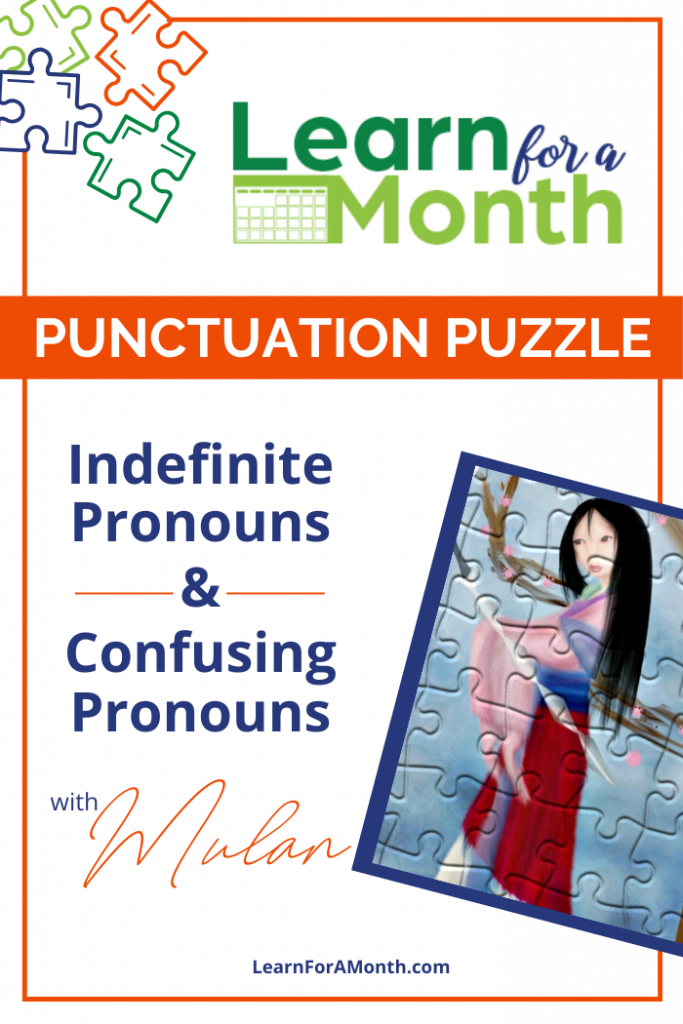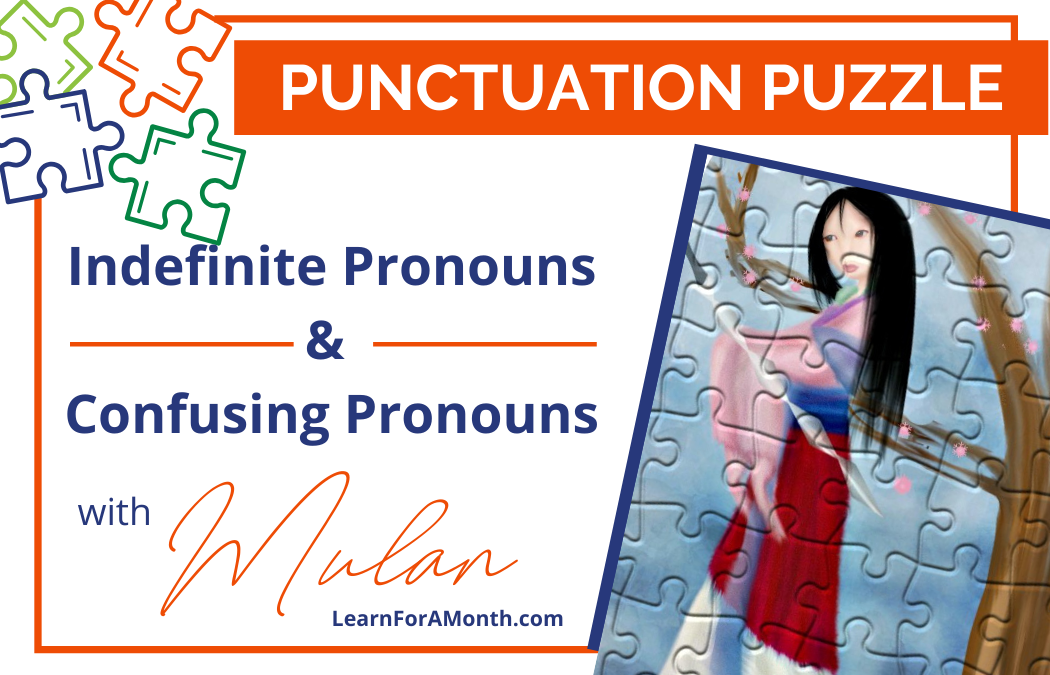Welcome to another Punctuation Puzzle! This one is a doozy…and Zac does an amazing job teaching through it. So I won’t take much of your time in this introduction except to point out two important teacher tips for you:
1) It is imperative that students learn prepositions thoroughly—and not just a song or rhyme containing thirty of the two hundred-plus. We must teach prepositions thoroughly so that students can find prepositional phrases at a glance, mentally remove them (I have my students use parentheses), and match subjects with verb without any internal confusing words! Check out this post to learn more)
2) One simple teaching technique can eliminate all of the confusion with apostrophes and pronouns—even the all-confusing its and it’s: Teach students to say all contraction to themselves UN-contracted, and they will never use it’s for its again. (Check out my Five tips for its/it’s slideshow here:)
i. The dog lost its collar. (Correct)
ii. The dog lost it’s (IT IS) collar. (Incorrect)
Now…no summer breaks from Punctuation Puzzles, teachers! Always learning…always learning! ?

The Puzzle
Each of the families were required to send one man to serve in the Emperor’s army. Fa Mulan knew her father could not serve, so she removed his sword from it’s cupboard and took his’ place.
The Answer
Each of the families was required to send one man to serve in the Emperor’s army. Fa Mulan knew her father could not serve, so she removed his sword from its cupboard and took his place.
PROBLEM #1: Indefinite Pronouns
A. We have three problems in our example sentences, and the first one revolves around an indefinite pronoun. Indefinite pronouns are a class of pronouns that refer to groups of people or amounts, not to he, she, they, etc.
1. We use the word “indefinite” to describe these pronouns because they don’t refer to anything specific.
2. Indefinite pronouns include words like nobody, someone, everything, and few.
3. What can make using indefinite pronouns confusing is matching them with the correct plural or singular form of the verb in the sentence.
4. If an indefinite pronoun comes at the beginning of a sentence, the verb must agree with it in number (singular or plural), regardless of any words in-between. Let’s see how this works,
i. Neither Mulan nor the rest of the army was prepared for the Huns’ attack.
ii. In this sentence, neither is singular. Therefore, the verb should be singular.
iii. The verb was is the singular, past form of the verb to be. We use it instead of were, which is the plural, past form of the verb to be.
iv. This can be tricky because the words, Mulan nor the rest of the army, together are plural–unlike neither.
v. However, as a rule, we must ignore any words between the indefinite pronoun and the verb when determining what verb form to use.
B. Let’s apply our new knowledge to our passage,
Each of the families were required to send one man to serve in the Emperor’s army. Fa Mulan knew her father could not serve, so she removed his sword from it’s cupboard and took his’ place.
1. In the first sentence, we see an indefinite pronoun (Each), which is singular. However, the verb were is plural.
2. According to our rule, even though the word families is plural, we need to ignore any words between Each and its verb were.
3. Therefore, what should our verb be? If you scan our earlier example, you will discover that was is the singular companion to the plural were. So, we need to replace were with was.
Each of the families was required to send one man to serve in the Emperor’s army. Fa Mulan knew her father could not serve, so she removed his sword from it’s cupboard and took his’ place.
PROBLEMS #2 and #3: Possessive Pronouns
A. The other two problems in our example sentences relate to possessive pronouns. Possessive pronouns are pronouns that show possession or ownership.
1. Possessive pronouns include words like hers, his, ours, its, their.
2. One important rule to remember about possessive pronouns is that, unlike possessive nouns, possessive pronouns never require an apostrophe. Let’s see an example of this:
i. The Huns used their fast horses to quickly reach the heart of China.
ii. Their is a possessive pronoun, and here it is used correctly, without an apostrophe.
3. A common mistake related to possessive pronouns and apostrophes is the possessive pronoun its. Its is the correct form; it’s is not, because it’s is actually a contraction for it is. Let’s check out an example:
i. The rocket hit its target on the side of the mountain.
ii. Here, if we used it’s, we would be literally saying, The rocket hit it is target on the side of the mountain.
iii. That doesn’t make any sense; so that’s why we use its without an apostrophe as the possessive pronoun form of it.
B. Now, let’s apply what we’ve learned to our example sentences:
Each of the families was required to send one man to serve in the Emperor’s army. Fa Mulan knew her father could not serve, so she removed his sword from it’s cupboard and took his’ place.
1. Here, we see that it’s is incorrectly used in place of its. We are talking about the sword’s cupboard; we are not using a contraction for it is. So, we need to remove the apostrophe.
Each of the families was required to send one man to serve in the Emperor’s army. Fa Mulan knew her father could not serve, so she removed his sword from its cupboard and took his’ place.
2. Finally, his is used with an apostrophe, which should never be used with a possessive pronoun like his.
3. After correcting this error, we have our final sentence:
Each of the families was required to send one man to serve in the Emperor’s army. Fa Mulan knew her father could not serve, so she removed his sword from its cupboard and took his place.
Today’s Punctuation Puzzle sentence comes from a student writing assignment found in the Mulan’s Twice-Told Tale writing packet.


Trackbacks/Pingbacks